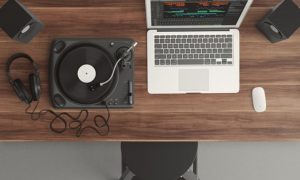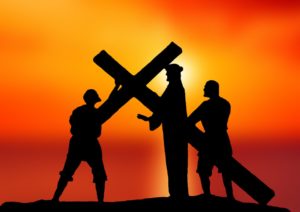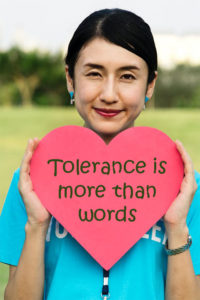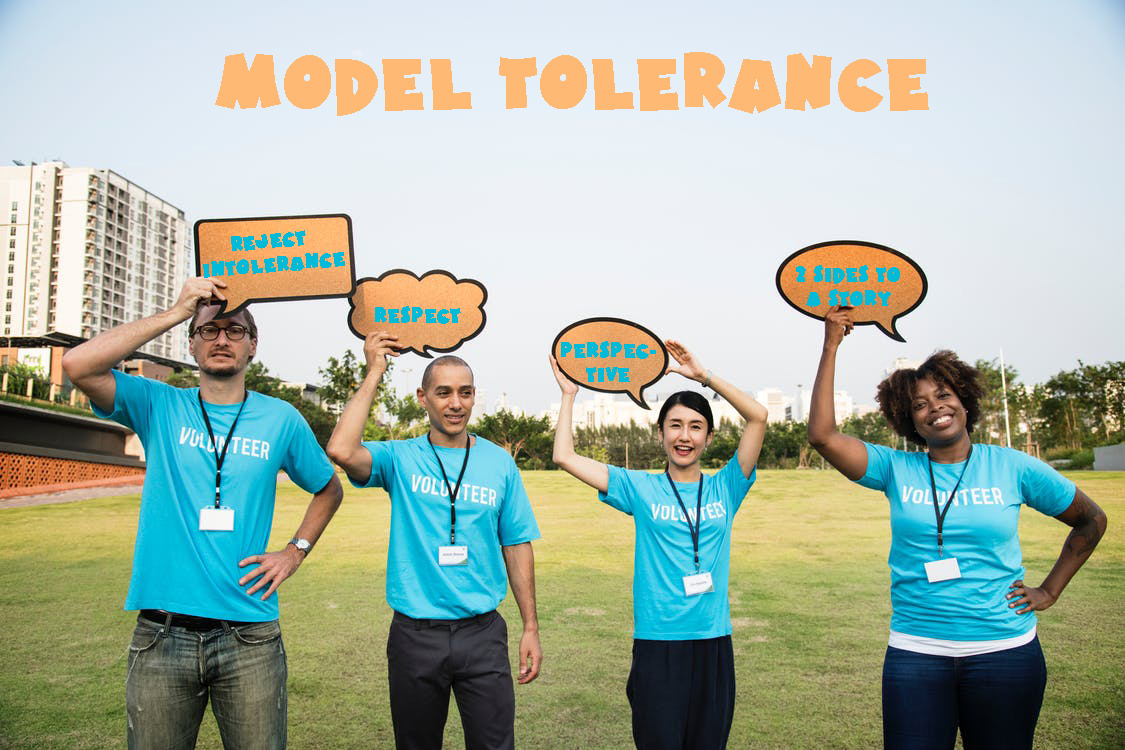2 Children’s Books You’ll Love
As a teacher, I’m always looking for children’s books for my students. I’m excited to say I’ve found two I think you’ll like:
- Amazing Matilda — A coming of age of a monarch butterfly; delightful
- Sir Chocolate and the Fondant Five story and cookbook
 Amazing Matilda
Amazing Matilda
by Bette Stevens
5/5
Bette Stevens Amazing Matilda: The Tale of a Monarch Butterfly (CreateSpace 2012) is the story of tiny Matilda, a round white creature born from an egg in Nature’s garden with a burning desire to fly. Without wings, though, she knows that can’t happen. Matilda has no idea that in her life, she will morph from the crawly leaf-bound creature to a gorgeous monarch butterfly. She tells her animal friends about her passion to fly and they offer their stories of growing up as well as sage advice any parent would be envious of. For example, her friend Sparrow suggests:
Another friend suggests:
She is frustrated by this good-natured advice because she has no idea how to do what they suggest:
“Sparrow said that I must have patience and that I must follow my instincts. Now, you say I must have wings. Where can I find all of those things?”
As Matilda grows, she changes from a larva to pupa to a gorgeous winged adult. Each stage in Matilda’s amazing journey is accompanied with wonderful drawings that show her progress, who she meets, and how she changes.
As a result, readers are not just entertained by the story but happily learn about the development of a butterfly. There are lots of cute lines, such as:
“Matilda crunched and munched and lunched, leaf after leaf, day after day.”
If you loved P.D. Eastman’s incomparable book, Are You My Mother, about a baby bird’s search for its mother, you must read this book. If Charlotte’s Web is one of your childhood favorites, I say, Move over Charlotte. Matilda is now here!
This is a short book. In fact. This review is almost longer than the story!
 Sir Chocolate and the Fondant Five story and cookbook
Sir Chocolate and the Fondant Five story and cookbook
by Robbie Cheadle
5/5
Robbie Cheadle’s Sir Chocolate and the Fondant Five story and cookbook (2019) is the next in the author’s delightful series of books that blend children’s stories with themed original recipes. This one is a clever story poem about the disappearance of zoo animals and how Sir Chocolate must figure out what happened.
“One day Sir Chocolate arrived, and not a sound could hear, he called long and loud, but no animals did appear. The animals had vanished, the zoo was empty and still,”
“The monkey is naughty, he likes to have fun, he plays tricks on the others, then away he does run.”
The story is written in the format of a poem and includes great photographs that help readers visualize the action. At the completion of the story, there is a cute poem to introduce an original collection of animal-themed recipes children can complete with their parents. Some of the recipes are:
- Sir Chocolate peppermint caramel pudding
- Cheetah Cheese scones
- Rino Soetkoekies
I have bought several of these books because I love the idea of blending a story with cooking and inspiring kids and parents to spend time together. I also love that Robbie writes these books with her son, Michael, each doing their part in writing, cooking, and photographing. Overall, this is another excellent book in a clever collection that not only entertains but brings parents and kids together.
Share this:
- Click to share on Facebook (Opens in new window) Facebook
- Click to share on X (Opens in new window) X
- Click to share on LinkedIn (Opens in new window) LinkedIn
- Click to share on Pinterest (Opens in new window) Pinterest
- Click to share on Telegram (Opens in new window) Telegram
- Click to email a link to a friend (Opens in new window) Email
- More
169 Tech Tip #7 Transparent Backgrounds
 In these 169 tech-centric situations, you get an overview of pedagogy—the tech topics most important to your teaching—as well as practical strategies to address most classroom tech situations, how to scaffold these to learning, and where they provide the subtext to daily tech-infused education.
In these 169 tech-centric situations, you get an overview of pedagogy—the tech topics most important to your teaching—as well as practical strategies to address most classroom tech situations, how to scaffold these to learning, and where they provide the subtext to daily tech-infused education.
Today’s tip: #7–Transparent Backgrounds
Category: Images
Sub-category: Keyboarding
Q: When I insert a picture, the background isn’t transparent, so it covers everything behind it. How do I make it see-through?
A: Two ways to fix that problem:
- Select the picture; use the picture toolbar pen.
- If that doesn’t work, select the picture and then press Ctrl +T.
These don’t work in all cases. It depends upon the image file you’re using. I hope it covers your case.
Sign up for a new tip each week or buy the entire 169 Real-world Ways to Put Tech into Your Classroom.
Share this:
- Click to share on Facebook (Opens in new window) Facebook
- Click to share on X (Opens in new window) X
- Click to share on LinkedIn (Opens in new window) LinkedIn
- Click to share on Pinterest (Opens in new window) Pinterest
- Click to share on Telegram (Opens in new window) Telegram
- Click to email a link to a friend (Opens in new window) Email
- More
Subscriber Special: April
April 5th-15th:
Buy a K-8 School License
get 5 free print books of the grade level you purchased
(domestic purchase or freight-forwarders only)
Usually, you get one desk copy for each grade level included in your school license. Between April 5th and 15th, get five per grade level. That’s enough for a team to each have one.
To take advantage of this special, purchase from Structured Learning with PayPal or with a PO. Email us (admin at structuredlearning dot net) with your proof of purchase. We’ll send the extra books.
What is a school license?
Benefits of a School License
- provide an overarching curriculum map for using technology in your school
- provide access to full text PDF (or videos where relevant) from every digital device in your school, 24 hours a day. This maximizes productivity and student independence.
- enable flexible learning paths as students work at their own pace, with the ability to review or work ahead as needed
- share tech-in-ed pedagogy to infuse your school with technology
- enable teachers to dig deeper into relevant topics, vertically integrate with core grade-level teachers
- provide multiple authentic and organic formative and summative assessment
- provide free online Help via Ask a Tech Teacher (staffed by educators who use SL resources) and grade-specific online resources (for K-5 tech curriculum). This is unique to Structured Learning’s technology curriculum, not found with any other provider.
Benefits of School License for Students
- provide easy access to monthly lessons, how-tos, rubrics, project samples, practice quizzes, grade-level expectations, homework, images, and checklists (grade level Scope and Sequence and the Ready to Move On monthly keyboard workbooks lists, for example)
- provide quick links to websites required in lessons
- provide full color instructions that can be zoomed in on for greater detail
- allow a convenient place to take lesson notes (using a PDF annotator like iAnnotate)
- encourage students to be independent in their learning, work at their own pace rather than a one-size-fits-all class pace. This is great both for students who need more time and those who ‘get it’ and want to move on
- enable a quick way to spiral up to the next grade level for quick learners or back to earlier resources for student needing to scaffold their learning
- provide access to 10 companion videos (Ultimate Guide to Keyboarding curriculum license only) to take students through each month of their keyboarding journey. They’re approximately one hour, viewed at student’s pace
- prepare students for the rigor of end-of-year summative testing
Share this:
- Click to share on Facebook (Opens in new window) Facebook
- Click to share on X (Opens in new window) X
- Click to share on LinkedIn (Opens in new window) LinkedIn
- Click to share on Pinterest (Opens in new window) Pinterest
- Click to share on Telegram (Opens in new window) Telegram
- Click to email a link to a friend (Opens in new window) Email
- More
5 Favorite Activities to End the School Year
The end of the school year is a time when both students and teachers alike are distracted by thoughts of vacation, sleeping in, and no deadlines. For many, this means, during the last few weeks of school, learning limps to a grinding halt but increasingly, teachers use this time productively to introduce curricular- and standards-aligned activities that “color outside the lines” — step away from the textbook to blend learning with dynamic activities that remind students why they want to be life-long learners. Many of these, educators would love to teach but “just don’t have time for“, even though they align well with broad goals of preparing students for college and career.
If you’re looking for meaningful lessons to wrap up your school year, here are my top picks:
- Digital Passport
- Cool book reports
- Practice keyboarding
- Dig into cyberbullying
- Applied Digital Skills
Digital Passport
Common Sense Media’s award-winning Digital Passport is the gold-standard in teaching digital citizenship to grades 3-5 (or Middle School). This free-to-schools online program mixes videos, games, quizzes, and the challenge of earning badges to teach students the concepts behind digital citizenship:
- Communication
- Privacy
- Cyber-bullying
- How to search
- Plagiarism
It includes certificates of achievement, badges at the completion of units, and a classroom tracking poster to show how students are progressing.
Share this:
- Click to share on Facebook (Opens in new window) Facebook
- Click to share on X (Opens in new window) X
- Click to share on LinkedIn (Opens in new window) LinkedIn
- Click to share on Pinterest (Opens in new window) Pinterest
- Click to share on Telegram (Opens in new window) Telegram
- Click to email a link to a friend (Opens in new window) Email
- More
Cutting-Edge Tech To Improve Music Teaching
Music is arguably one of the most important subjects taught in school, yet is often the first to be cut away when budgets fail. Thank you, Jane Sandwood, Ask a Tech Teacher contributor, for discussing some of the online options to make teaching music easier, more effective.
 In a recent survey, 93% of Americans said that learning music is an important part of getting a well-rounded education. It is a subject that can also benefit many other areas of learning, including math and languages, by engaging many different hemispheres of the brain. Using technology to improve and expand teaching methods can help students learn about music quicker and give them a variety of different learning techniques.
In a recent survey, 93% of Americans said that learning music is an important part of getting a well-rounded education. It is a subject that can also benefit many other areas of learning, including math and languages, by engaging many different hemispheres of the brain. Using technology to improve and expand teaching methods can help students learn about music quicker and give them a variety of different learning techniques.
Innovative Piano Apps
When you are teaching music, having a basic understanding of the layout of a piano keyboard can be extremely useful, especially when it comes to learning music theory. The piano is visually simple, making tones and semitones easily identifiable in a way that is difficult with other instruments, such as the trumpet and saxophone. By understanding the keyboard, you can also teach the concept of sharps and flats in a logical way. There are a number of innovative piano apps on the market that make this possible – you don’t have to have access to an actual piano. In a small classroom this is ideal and students can also learn at home on their tablets and smartphones. Simply Piano and Joy Tunes are two excellent piano apps that provide informative lessons and musical knowledge in a logical, step-by-step way.
Streaming live music
It is impossible to learn about music without listening to it. Using live streaming services in the classroom is an excellent way to expose students to a wide variety of styles and genres from baroque and classical, through to hip-hop, K-pop and dance. Live video streaming has meant that you can bring the largest concerts in the world straight into the classroom. Or you could watch an intimate performance of a jazz trio. One of the biggest benefits of this is to see professional musicians at their best and study the techniques that they are using. You can also use this as a basis for discussion about composition and how music has evolved over the centuries. What would Mozart think of the evolution of live streaming? It certainly would have brought the classical music of the time to the masses, rather than being something that was generally only heard by the aristocracy.
Share this:
- Click to share on Facebook (Opens in new window) Facebook
- Click to share on X (Opens in new window) X
- Click to share on LinkedIn (Opens in new window) LinkedIn
- Click to share on Pinterest (Opens in new window) Pinterest
- Click to share on Telegram (Opens in new window) Telegram
- Click to email a link to a friend (Opens in new window) Email
- More
What You Might Have Missed in March
Here are the most-read posts for the month of March:
- 33 Resources for Read Across America Day
- Teaching Basic Cybersecurity Measures To Everyday People (For Parents of Digital Natives)
- How Readilearn grew from one woman’s dream to an exciting education resource
- How Smart Tech and IoT are Making Educational Spaces More Accessible
- Humorous Look at What I Learned from my Computer
- Peer Feedback That Works
- The Importance of SEL to Education Success
- April is Financial Literacy Month
- Why Mastery Based Learning is a Good Option
- Fake News or Fact? How do you tell?
- Ways to Teach Tolerance
- Solve 50% of Tech Problems with 16 Simple Solutions
Share this:
- Click to share on Facebook (Opens in new window) Facebook
- Click to share on X (Opens in new window) X
- Click to share on LinkedIn (Opens in new window) LinkedIn
- Click to share on Pinterest (Opens in new window) Pinterest
- Click to share on Telegram (Opens in new window) Telegram
- Click to email a link to a friend (Opens in new window) Email
- More
Here’s a Preview of April
 Here’s a preview of what’s coming up on Ask a Tech Teacher in April:
Here’s a preview of what’s coming up on Ask a Tech Teacher in April:
- Cutting Edge Tech to Improve Music Teaching
- 5 Favorite Activities to End the School Year
- 9 Ways to Teach Tolerance
- Fake News or Fact? How do you tell?
- 10 Myths about teaching with tech
- Solve half of tech problems with 16 simple solutions
- Have Google Takeout at your end-of-year party
- What to do when you lose a digital document
- 11 projects to teach digital citizenship
- How to wrap up tech for the school year
- 5 favorite apps for summer learning
Share this:
- Click to share on Facebook (Opens in new window) Facebook
- Click to share on X (Opens in new window) X
- Click to share on LinkedIn (Opens in new window) LinkedIn
- Click to share on Pinterest (Opens in new window) Pinterest
- Click to share on Telegram (Opens in new window) Telegram
- Click to email a link to a friend (Opens in new window) Email
- More
Solve 50% of Tech Problems with 16 Simple Solutions
 The Number One reason–according to students–why their computer doesn’t work is… It’s broken. As a teacher, I hear this daily, often followed by the solution, I need a different computer. My students innately think computer problems are something they can’t solve. I asked them what happened in class when I wasn’t there to fix the problem, or at home. I usually got a shrug and one of these responses:
The Number One reason–according to students–why their computer doesn’t work is… It’s broken. As a teacher, I hear this daily, often followed by the solution, I need a different computer. My students innately think computer problems are something they can’t solve. I asked them what happened in class when I wasn’t there to fix the problem, or at home. I usually got a shrug and one of these responses:
- My classroom teacher can’t fix them.
- My mom/dad can’t fix them.
- The school tech people couldn’t get there fast enough.
Which got me thinking about how these problems that bring learning to a screeching halt really aren’t that complicated They don’t require a Ph.D in engineering or years of experience in IT. So why not teach kids how to troubleshoot their own problems?
I started with a list. Every time a student had a tech problem, I wrote it down and then ticked it off each time it happened. It didn’t take long to determine that there are about sixteen problems that happen often and repetitively. Once students learned how to solve these, they’d be able to fix half of the problems that bring their education to a screeching halt. I spent the school year teaching the solutions authentically as they arose starting in Kindergarten. By the end of 2nd grade, students felt empowered, By the end of 5th grade, they rarely asked for help.
Here’s my list but yours may be different. Include those that arise granularly in your school’s educational endeavor. For example, if you use Macs, right-click issues won’t be as big a deal.
Share this:
- Click to share on Facebook (Opens in new window) Facebook
- Click to share on X (Opens in new window) X
- Click to share on LinkedIn (Opens in new window) LinkedIn
- Click to share on Pinterest (Opens in new window) Pinterest
- Click to share on Telegram (Opens in new window) Telegram
- Click to email a link to a friend (Opens in new window) Email
- More
18 Easter Sites For Students
 Many Christians celebrate Jesus Christ’s resurrection on Easter Sunday. To non-Christians (or non-traditional Christians), that event signifies a rebirth of spring that is filled with joy and gifts — and chocolate! Overall, it is America’s most-popular holiday with Christmas a close second. The date depends on the ecclesiastical approximation of the March equinox. This year, it’s April 1, 2018.
Many Christians celebrate Jesus Christ’s resurrection on Easter Sunday. To non-Christians (or non-traditional Christians), that event signifies a rebirth of spring that is filled with joy and gifts — and chocolate! Overall, it is America’s most-popular holiday with Christmas a close second. The date depends on the ecclesiastical approximation of the March equinox. This year, it’s April 1, 2018.
Here’s a good mixture of games, lesson plans, stories, and songs that can be blended into many academic subjects:
18+ Interactive Easter websites
Preschool-2
This website includes a colorful collection of Easter (and Spring) games and information that is visual and enticing to youngers. Games are Easter Math, Easter Egg Hunt, Easter Egg Dress-up, Easter Word hunt, complete-the-sentence, and more. Also, viewers will find websites about the history of Easter around the world.
Share this:
- Click to share on Facebook (Opens in new window) Facebook
- Click to share on X (Opens in new window) X
- Click to share on LinkedIn (Opens in new window) LinkedIn
- Click to share on Pinterest (Opens in new window) Pinterest
- Click to share on Telegram (Opens in new window) Telegram
- Click to email a link to a friend (Opens in new window) Email
- More
9 Ways to Teach Tolerance
 If you watch the news, tolerance seems to be a lost art. College kids shout down speakers. Mobs throw chairs through windows. Hordes of hooligans loot stores. It’s not that we don’t try. The Kindness Movement is more popular than ever. TeachingTolerance.org even uses Black Lives Matter as a model for tolerance education. Martin Luther King Day is always chockful of admonitions against prejudice and intolerance.
If you watch the news, tolerance seems to be a lost art. College kids shout down speakers. Mobs throw chairs through windows. Hordes of hooligans loot stores. It’s not that we don’t try. The Kindness Movement is more popular than ever. TeachingTolerance.org even uses Black Lives Matter as a model for tolerance education. Martin Luther King Day is always chockful of admonitions against prejudice and intolerance.
But how do you teach it in the confines of a classroom? Another lesson plan? A movie about Mahatma Gandhi? Quotes like this from Helen Keller:
The highest result of education is tolerance.
These have all been done and by many measures, America and the world are more intolerant than ever. So what do you do in your classroom to get this important attitude across? Here are some fresh ideas that you may not have tried:
Model tolerant behavior
Words don’t stem the tide of intolerance. No matter how many times we say, “See the other’s perspective,” or “Be kind,” these words are meaningless to a dedicated zealot who feels the end justifies the means. Sometimes, the best way is simply to model tolerance. In writing, this is a powerful storytelling device called “show don’t tell”. It means instead of talking about tolerance, be tolerant. When a student gets angry over a grade, explain where they fell short or how to improve a grade.
Admittedly, in the current social media world, words are today’s doing. People join hashtag campaigns like #Nevergiveup or #Bringhomeourgirls. While these may raise public awareness, they don’t deliver the tolerance necessary to change the outcome. Don’t hashtag a sentiment; find an action for the words.
Share this:
- Click to share on Facebook (Opens in new window) Facebook
- Click to share on X (Opens in new window) X
- Click to share on LinkedIn (Opens in new window) LinkedIn
- Click to share on Pinterest (Opens in new window) Pinterest
- Click to share on Telegram (Opens in new window) Telegram
- Click to email a link to a friend (Opens in new window) Email
- More






































